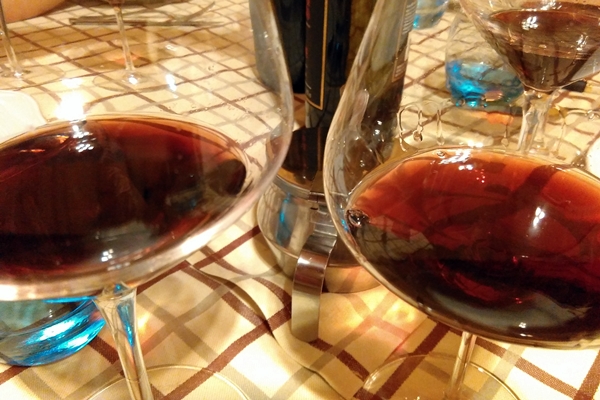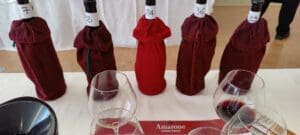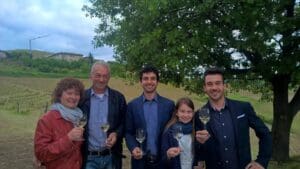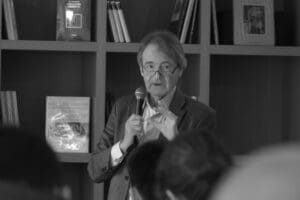What does Montalcino mean to you? Is it a name synonymous with wines from Sangiovese, or the most celebrated wine region in entire Italy? Perhaps something else? In October 2016, my visit to Montalcino reveals a lot more than what I previously understood. And the more I learned, I realised the less I know. For the wines of Montalcino is like the fog that shrouds the hills. Beautiful, yet mystifying, both at the same time.
Surrounded by Ombrone, Orcia, and Asso rivers, the square region of Montalcino also includes several communes with very few inhabitants. The hamlets of Torrenieri to the northeast, Castelnuovo dell’Abate and Sant’Angelo in the south, and Camigliano in the southwest are reminders of human existence out amidst Montalcino’s rolling hills and green woods. There are few lights in the night and fewer people after nightfall.

Based on records dated to the Renaissance, the great wines of Montalcino was initially a white named Moscadello di Montalcino. Known as the nectar of Tuscany, Moscadello were served in imperial courts throughout Europe and even the Vatican. In the nineteenth century, it fell out of favour for two reasons. One, difficult to cultivate due to fungi diseases, and two, Sangiovese is the new kid on the block. Eventually, it was the root pest Phylloxera that dealt a fatal blow to Moscadello, giving farmers the reason to replace vineyards with Sangiovese. Fortunately, and thanks to the effort from wineries like Caprili, Capanna, Col d’Orcia, some Moscadello continues to exist in vineyards of Montalcino.
Sangiovese, or more accurately Brunello in this area, was almost an overnight sensation. In April 1969, the Italian Embassy in London hosted a state dinner and served a Brunello Biondi Santi 1955 to foreign dignitaries including Queen Elizabeth II. The positive responses about the wines spread quickly, inspiring many to plant Sangiovese. According to statistics, there were about 76 hectares registered for Brunello di Montalcino in 1970, and this number doubled to 156 hectares in 1971. The number continued to grow till today where we have 2,100 hectares registered. Thus, making Brunello di Montalcino the largest production denomination in the 24,000 hectares Montalcino region.
Within the denomination, the highest point that stands close to 600 metres is the town of Montalcino. Its surrounding area slopes down, which makes one thinks of it as the tip of a pyramid. For many reasons, most Brunello producers are located around this town. With an average height of 350 to 500 metres above sea level, the area provides Sangiovese an ideal long ripening season along with well-drained soil. The second most populated area lies south of Montalcino town and revolves around the communes of Sant’Angelo and Castelnuovo dell’Abate. While the least occupied territory is in the northwest area, where dense woodland still dominates along with the only two wineries, Tenute Silvio Nardi and Casale del Bosco.
 Having two Brunello wines from the same vintage together was the best way to understand Sangiovese ability to reflect its place of origin. And that was what Castelgiocondo winemaker Filippo Manni did when we met for a casual dinner. He ordered for us a bottle each of Le Chiuse 2011 and Il Poggione 2011.
Having two Brunello wines from the same vintage together was the best way to understand Sangiovese ability to reflect its place of origin. And that was what Castelgiocondo winemaker Filippo Manni did when we met for a casual dinner. He ordered for us a bottle each of Le Chiuse 2011 and Il Poggione 2011.
As one can see, it was not difficult to tell the sharp contrast in colour intensity. A garnet-ruby Le Chiuse and garnet with orange-hued Il Poggione. Furthermore, Il Poggione, which is in the southern area closer to the town of Sant’Angelo, gave a more robust and stronger profile compared to Le Chiuse’s more elegant and dried floral note coming slightly to the north of Montalcino. Although it is fair to describe Montalcino as the warmer part of Tuscany, and indeed more heated than Chianti, there remains a significant variation in temperature between sub-areas. It doesn’t take much training to tell these wines are too different to think as a homogenous denomination.
The consortium is working towards identifying and naming subzones that can categorise the characteristics better. But like everything else in Italy, it takes many dinners, wines, and grappa before deciding. Before all this, perhaps the best reference is the book titled Brunello di Montalcino by Kerin O’Keefe. Otherwise, always buy from the house you know best.



